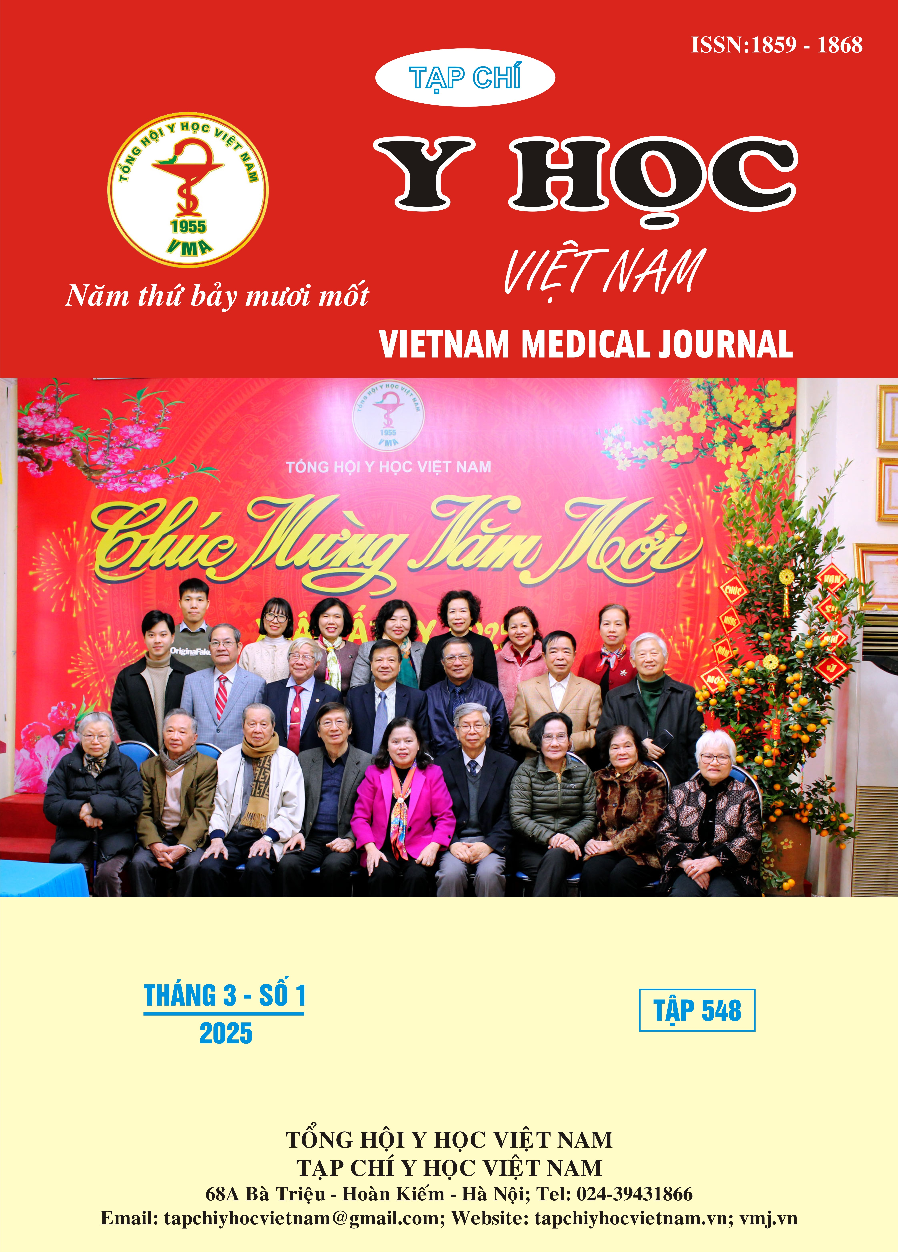ANTIBIOTIC RESISTANCE LEVELS OF CERTAIN BACTERIA IN THE INTENSIVE CARE AND TOXICOLOGY DEPARTMENT CAN THO CENTRAL GENERAL HOSPITAL 2023 – 2024
Main Article Content
Abstract
Background: Hospital-acquired pneumonia (HAP) is one of the most severe nosocomial infections, particularly in the Intensive Care and Toxicology Unit. Objective: To determine the antibiotic resistance patterns of selected bacterial pathogens causing HAP in the Intensive Care and Toxicology Unit, Can Tho City General Hospital, from 2023 to 2024. Materials and methods: A cross-sectional descriptive study was conducted on 245 HAP patients in the Intensive Care and Toxicology Unit, Can Tho City General Hospital, from February 2023 to December 2024. Results: Male patients accounted for 56.3%, with the majority over 60 years old (66.9%). Common comorbidities included diabetes mellitus (38.0%), hypertension (33.9%), and heart failure (21.6%). Klebsiella pneumoniae had the highest resistance rate (90.6%), followed by Acinetobacter baumannii (75.3%), Escherichia coli (43.6%), and Pseudomonas aeruginosa (35.0%). The highest extensively drug-resistant (XDR) rates were observed in Klebsiella pneumoniae (60.4%) and Acinetobacter baumannii (49.3%). Pan-drug resistance (PDR) was low but showed a slight increase in K. pneumoniae and A. baumannii. No PDR cases were reported for P. aeruginosa. Changes in multidrug-resistant (MDR), XDR, and PDR rates between 2023 and 2024 were not statistically significant (p > 0.05). Conclusions: The prevalence of multidrug-resistant and extensively drug-resistant Gram-negative bacteria in HAP remains high, particularly for Klebsiella pneumoniae and Acinetobacter baumannii.
Article Details
Keywords
hospital-acquired pneumonia, multidrug resistance, extensive drug resistance
References
2. Nguyễn Thị Đoan Trinh, Thị Lan Phương Phan, Thị Minh Hòa Hoàng, và Huy Hoàng Nguyễn (2023). “Đặc điểm gây bệnh và tính kháng kháng sinh của Pseudomonas aeruginosa tại bệnh viện C Đà Nẵng ”. Tạp Chí Y Dược học Cần Thơ, số 58:159-66.
3. J-L. Vincent et al (2006), “Sepsis in European intensive care units: results of the SOAP study,” Crit Care Med, vol. 34, no. 2, pp. 344–353. doi:10.1097/01.ccm.0000194725.48928.3a.
4. V. Q. Dat et al (2017), “Bacterial bloodstream infections in a tertiary infectious diseases hospital in Northern Vietnam: aetiology, drug resistance, and treatment outcome,” BMC Infect Dis, vol. 17, no. 1, p. 493. doi: 10.1186/s12879 017-2582-7
5. Quế Anh Trâm, Ngô Thị Phương Oanh (2023), “Nghiên cứu đặc điểm kháng kháng sinh của các vi khuẩn gram âm gây nhiễm khuẩn huyết thường gặp tại Bệnh viện hữu nghị Đa khoa Nghệ An năm 2022”, Tạp chí Y học Việt Nam, Tập 530, Số 1/2023, tr. 302 - 306
6. Phạm Thị Ngọc Nga, Nguyễn Trí Yến Chi, Trương Thị Bích Vân (2024), “Mức độ đề kháng kháng sinh của một số vi khuẩn gram âm thường gặp tại Bệnh viện Đa khoa Thành phố Cần Thơ từ năm 2019 – 2023, Tạp chí Y học Việt Nam, Tập 538, Số 3/2024, tr. 111 - 116"
7. P. Sawatwong et al (2019), “High Burden of Extended-Spectrum β-Lactamase-Producing Escherichia coli and Klebsiella pneumoniae Bacteremia in Older Adults: A Seven-Year Study in Two Rural Thai Provinces,” Am J Trop Med Hyg, vol. 100, no. 4, pp. 943–951. doi: 10.4269/ ajtmh.18-0394.


